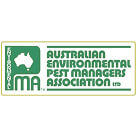1. Hollow-Sounding Timber
If you tap on skirting boards, window frames, or floorboards and they sound hollow, termites may have eaten the wood from the inside out.
2. Mud Tubes or Mud Leads
Subterranean termites build mud tubes to protect themselves while moving between their nest and a food source. These are often found on walls, foundations, or brickwork.
3. Cracked or Bubbling Paint
Termite damage beneath the surface can cause paint to bubble or crack, often resembling water damage.
4. Discarded Wings
After termites swarm, they shed their wings. If you find small, transparent wings around window sills or entryways, a nearby colony may be active.
5. Noisy Walls or Clicking Sounds
Termites can sometimes be heard as they chew through timber. You may notice a faint clicking sound inside walls, an indication of termite communication, especially at night when the house is quiet.
6. Tight-Fitting Doors and Windows
As termites eat through timber, they create moisture that causes surrounding wood to swell. This can lead to hard-to-open windows or doors.
7. Tunnels in Wood
Visible galleries or tunnels in exposed timber can be a sure sign that termites have been active for some time.








